#Arbroath
Explore tagged Tumblr posts
Text
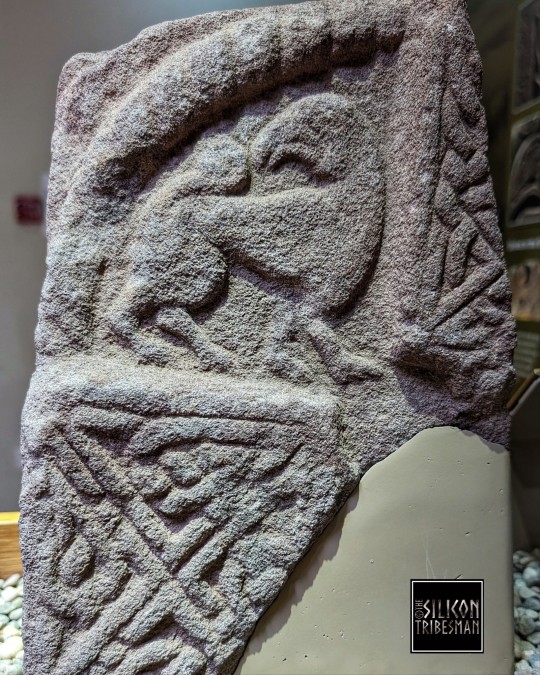
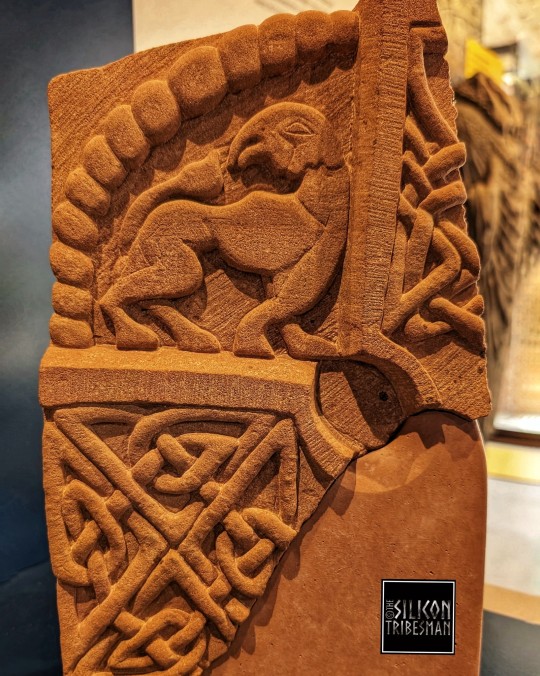
Pictish Symbol Stone, 9th Century CE, St. Vigeans Stones and Museum, Arbroath and a contemporary carved replica at Arbroath Abbey, Angus, Scotland
#pictish stones#pictish beast#pictish art#pictish#pict#stonework#picts#ancient living#ancient cultures#ancient history#stonecarving#Scotland#Arbroath#Arbroath Abbey
216 notes
·
View notes
Text

Arbroath Beach
#arbroath#beach#sand#fog#foggy#lighthouse#landscape#landscapeexposurenetwork#sea#canon#tim dennis#photographers on tumblr#photography#lensblr#tim dennis.tumblr#70d#canon 70d#original photographers
73 notes
·
View notes
Text

On April 6th 1320, the Declaration of Arbroath was drawn up by the monks of Arbroath Abbey.
The Declaration was probably drawn up by Bernard, Abbot of Arbroath. It was authenticated by seals, as documents at that time were not signed. Only 19 seals now remain of what might have been 50 originally, and many are in poor condition.
The top picture show 18 of the seals, I put this together ten years ago and I recall I could only find 18, which suited me as it made it look neater!
Sources differ a wee bit, one tells me it opens with a list of 40 nobles, another says 39, so if you find discrepancies don’t point them out, just accept the post as the work of a guy trying his best to tell a story as best he can.
There are 39 (40?) names (eight earls and thirty one barons) at the start of the document. Presumably their seals were all to be appended, but it is too difficult to tell now if that did happen, certainly the ribbons are there for all the named people.
The Declaration of Arbroath is a modern name given to the document, originally I doubt it had a name, it was after all just a letter to the then head of the church Pope John XXII. I say just, but it was much more than “just a letter” it was a statement the Scots were sending out.
Many look at Bannockburn as the end of Scotland’s fight for independence, but it was only the beginning of the end.
Scottish raids on the north of England, Edward II of England would not drop the long-standing English claim to overlordship of Scotland. Neither Edward nor the Pope recognised Robert I as king of Scots, he had been excommunicated after the murder of John Comyn in a church.
A papal attempt to secure peace failed when The Bruce recaptured the border town of Berwick in 1318. The Pope issued letters in November 1319 summoning the King and four Scottish bishops to attend the papal court. Their refusal to obey the summons led to their excommunication. The Declaration was part of their diplomatic counter-offensive.
The Declaration’s content was probably planned at a meeting of the King and his council of advisers at Newbattle Abbey, just south of Edinburgh, in March 1320. Arrangements were presumably made then for the barons to seal the letter. The Declaration was written in Latin on sheep-skin, and is dated at the monastery of Arbroath in Angus, the location of the king’s chancery or writing-office. King Robert’s chancellor, Bernard, was abbot of Arbroath. The letter was written by one of the chancery scribes. It is about 1000 words long. Its author included short quotations from the Bible and from the 1st century BC Roman author and politician, Sallust, re-phrased to emphasise the argument.
The Declaration emphasises Scotland’s long history as an independent Christian kingdom. It contains a brief account of the mythical origins of the Scots: they had overcome many difficulties in their journey from Greater Scythia (to the north of the Black Sea) via Spain to Scotland. It explains that they had lived in freedom and peace until King Edward I (father of the present King Edward II) invaded Scotland and caused widespread havoc.
The Declaration asserts that the Scots were saved by their present King, Robert Bruce, whom they will defend as their king unless he seeks to make their kingdom subject to the English king. The Pope is asked to persuade Edward II to leave the Scots in peace, and Scotland’s support for a crusade is pledged if peace should be achieved. The letter closes with a threat to the Pope – that he would be answerable to God should war continue!
The letter implies that all Scots were steadfast in their support of Robert I as king. But in reality that support was not universal. The majority of the barons named in the Declaration were King Robert’s loyal supporters, but not all. Furthermore, Robert’s dynasty was fragile – his heir, grandson Robert Stewart, was only four years old.
It famously said: “For as long as 100 of us shall remain alive, we shall never in any wise consent submit to the rule of the English, for it is not for glory we fight, nor riches, or for honour, but for freedom alone, which no good man loses but with his life.”
I think most of us know the quote, or at least part of it, most Scots that is, not that we were taught it at School, although that has changed somewhat with education now being a devolved matter and Scottish history is being introduced to our bairns, it’s not perfect yet, but is getting there.
Back in medieval times seals were used in the same way signatures are nowadays, documents like this were never signed.
So why send it to the Pope, well at the time, in Christendom, which was mainly in Europe, the Pope was the main mediator, everyone believed in God, to question him and his messengers, it was heresy, Pope John XXII was the head honcho!
I’ve mentioned in previous posts about Robert the Bruce not having the full support of the Scottish people, and even when the letter was drawn up this was true, yes he had the majority, but we know that later in the summer of 1320 there was a conspiracy quelled against Robert Bruce. Some of the barons that signed this letter were later shown to have been part of this conspiracy against him. Of those named in the letter Lord David de Brechin, who didn’t’ plot but knew of the plot and never told anyone, was executed and drawn through the streets of Perth. William II de Soules was found guilty, and incarcerated in an act of clemency, only to be found dead later in mysterious circumstances. Bruce was ruthless in putting the plot down. Roger de Mowbray’s end was perhaps the most gruesome. He died in custody before his trial and yet his body was brought before the parliament and made to stand in order to receive judgement and sentencing of being drawn, hung and beheaded! Bruce did however intervene at the end to allow a decent burial, probably to enhance his own reputation after a merciless coup of dissenters.
As I said earlier the “Declaration” is a newer title given to the document, beforehand it was given a long and literal description along the lines of ‘A letter to the Pope by the barons and freeholders of Scotland’. So how did we get the name that it is known as today.
There have been comparisons made with the 1776 US Declaration of Independence. There is no evidence that the Americans used our document as a template, in fact there are historians who point to the US Declaration actually being the inspiration for The Declaration of Arbroath getting it’s new name. It’s an interesting take and we can’t really discount it, or why would the document suddenly get a name after hundreds of years?
So was the letter a success? Well we know that the Pope replied on 28th of August In his reply to the letter, the Pope urged a reconciliation between the warring sides. It would be some years before this came about.
Following the deposition of Edward II in 1327 and consequent discord in England, an opportunity arose to negotiate a settlement. The treaty of Edinburgh-Northampton in March 1328 was supposed to effect a “final and perpetual peace”. It included the recognition of Robert I as king, and of Scottish independence.
In 1329 the Pope issued a bull permitting the anointing and crowning of the king of Scots by the bishop of St Andrews as the Pope’s representative, a very important concession, originally, not only Robert the Bruce was excommunicated, Scotland as a Nation was, the 1229 bull was the end of a long road in reconciling with the church.
List of signatories
Duncan, Earl of Fife (changed sides in 1332)
Thomas Randolph, Earl of Moray (nephew and supporter of King Robert although briefly fought for the English after being captured by them, Guardian of the Realm after Robert the Bruce's death)
Patrick Dunbar, Earl of March (or Earl of Dunbar) (changed sides several times)
Malise, Earl of Strathearn (King Robert loyalist)
Malcolm, Earl of Lennox (King Robert loyalist)
William, Earl of Ross (earlier betrayed King Robert's female relatives to the English)
Magnús Jónsson, Earl of Orkney
William de Moravia, Earl of Sutherland
Walter, High Steward of Scotland (King Robert loyalist)
William de Soules, Lord of Liddesdale and Butler of Scotland (later imprisoned for plotting against the King)
Sir James Douglas, Lord of Douglas (one of King Robert's leading loyalists)
Roger de Mowbray, Lord of Barnbougle and Dalmeny (later imprisoned for plotting against King Robert)
David, Lord of Brechin (later executed for plotting against King Robert)
David de Graham of Kincardine
Ingram de Umfraville (fought on the English side at Bannockburn but then changed sides to support King Robert)
John de Menteith, guardian of the earldom of Menteith (earlier betrayed William Wallace to the English)
Alexander Fraser of Touchfraser and Cowie
Gilbert de la Hay, Constable of Scotland (King Robert loyalist)
Robert Keith, Marischal of Scotland (King Robert loyalist)
Henry St Clair of Rosslyn
John de Graham, Lord of Dalkeith, Abercorn & Eskdale
David Lindsay of Crawford
William Oliphant, Lord of Aberdalgie and Dupplin (briefly fought for the English)
Patrick de Graham of Lovat
John de Fenton, Lord of Baikie and Beaufort William de Abernethy of Saltoun
David Wemyss of Wemyss
William Mushet
Fergus of Ardrossan
Eustace Maxwell of Caerlaverock
William Ramsay
William de Monte Alto, Lord of Ferne
Alan Murray D
onald Campbell
John Cameron
Reginald le Chen, Lord of Inverugie and Duffus
Alexander Seton
Andrew de Leslie
Alexander Straiton
In addition, the names of the following do not appear in the document's text, but their names are written on seal tags and their seals are present:
Alexander de Lamberton (became a supporter of Edward Balliol after the Battle of Dupplin Moor, 1332)
Edward Keith (subsequently Marischal of Scotland; d. 1346)
Arthur Campbell (Bruce loyalist)
Thomas de Menzies (Bruce loyalist)
John de Inchmartin (became a supporter of Edward Balliol after the Battle of Dupplin Moor, 1332; d. after 1334)
John Duraunt
Thomas de Morham
In 2016 the Declaration of Arbroath was placed on the UK Memory of the World Register, part of UNESCO's Memory of the World Programme.
2020 was the 700th anniversary of the Declaration of Arbroath's composition; an Arbroath 2020 festival was arranged but postponed due to the COVID-19 pandemic.
The National Museum of Scotland in Edinburgh displayed it last year for the first time in fifteen years, I visited a couple of times, but was unable to take a photo as they banned photography. 😳
22 notes
·
View notes
Text

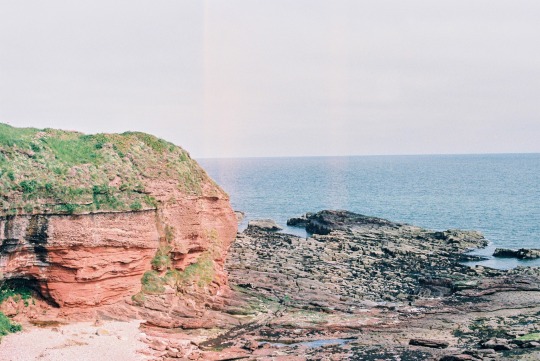



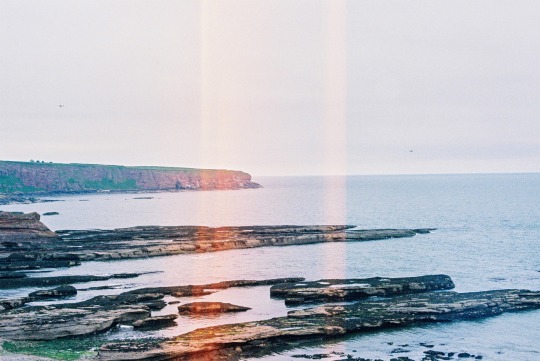
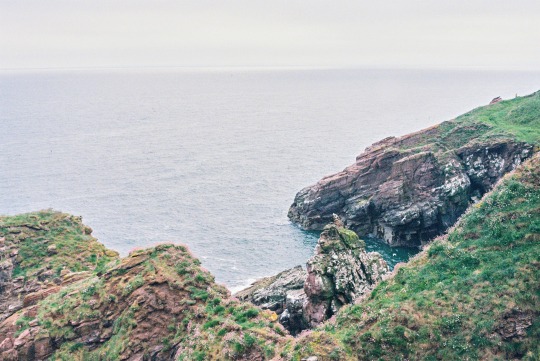
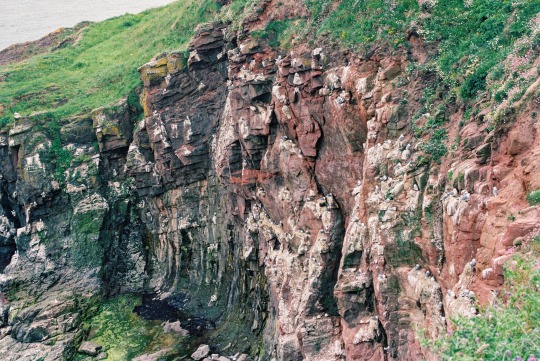
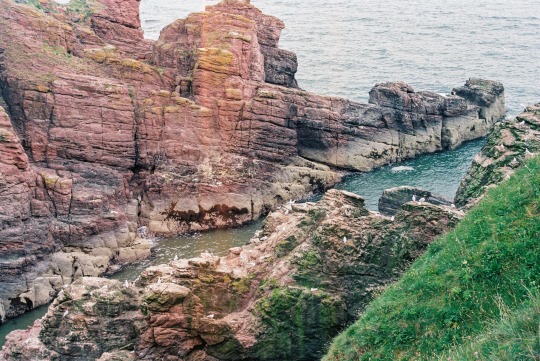
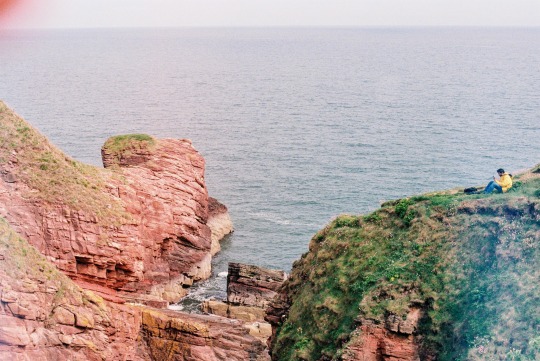
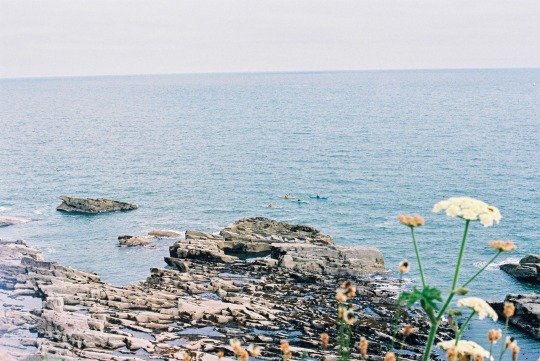
Arbroath Cliffs, 2023
35mm Film, Olympus OM10
#scotland#35mm#photographers on tumblr#original photographers#scottish#nature#original photography#35mm color film#35mm film#arbroath#north sea#cliff#ocean#canoe#sandstone#seagull#wildlife#sealife#ocean life#travel#olympus om10
406 notes
·
View notes
Text

Ian Fleming (British, 1906-1990), The Brown Sail, Arbroath. Oil on canvas, 30 x 40 in.
90 notes
·
View notes
Text










Scotland
August 2024
14 notes
·
View notes
Video
IMG_0479 copy por adam caird
17 notes
·
View notes
Text

#photooftheday#photography#blackandwhite#original#monochrome#artists on tumblr#an original#photoshoot#original photography blog#lensblr#yes we are magazine#pws photos worth seeing#ancient scotland#arbroath#photoset#photography magazine#stone carving#stone art
10 notes
·
View notes
Text
Arbroath Festival announces New Scriptorium Residencies for comic creators
Working in partnership with the Lakes International Comic Art Festival and others, the Arbroath Festival is seeking applications for five funded residencies, for comic creators and other creatives
Working in partnership with the Lakes International Comic Art Festival and others, the Arbroath Festival is seeking applications for five funded residencies, for comic creators and other creatives, via open call, for dates between May until August 2024. The residencies in The New Scriptorium in Arborath, Scotland, an artist designed and built structure sited inside the historical grounds of…

View On WordPress
#Arbroath#Arbroath Festival#downthetubes News#Lakes International Comic Art Festival#Residency#Scotland#The New Scriptorium
1 note
·
View note
Text







St. Vigeans Pictish Symbol Stones Selection 2, St. Vigeans Stones and Museum, Arbroath, Scotland
#picts#pict#pictish#pictish atones#archaeology#st vigeans#ancient cultures#ancient sites#stonework#pictish beast#Scotland#stone carving#Arbroath
131 notes
·
View notes
Text

Arbroath Beach, monochrome
#Arbroath#beach#fog#foggy#weather#lighthouse#black and white#tim dennis#canon#photographers on tumblr#photography#lensblr#tim dennis.tumblr#70d#canon 70d#original photographers#landscape#landscapeexposurenetwork#scotland
29 notes
·
View notes
Text
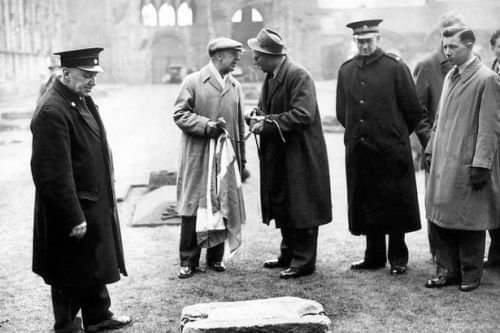
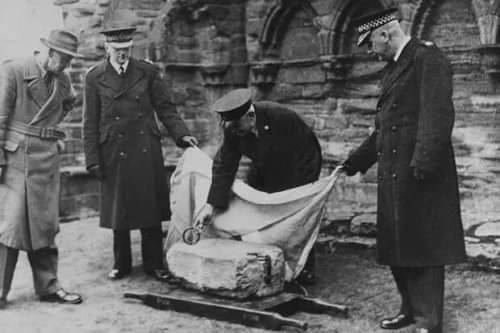

On 11th of April 1951 The Stone of Scone, the stone upon which Scottish monarchs were traditionally crowned, is found on the site of the altar of Arbroath Abbey.
You’ve seen the film and no doubt many of you know the story so here’s something a wee bit different
James Wishart, seen in two of the pics, was the then Keeper of Arbroath Abbey, and was there in 1951 when the students who stole the Stone of Destiny left it in the ruins of the Abbey.
There had been a huge police search for the miscreants. James, though, was no grass. He said the three men who returned the Stone were “young well set-up lads” but apart from that could give no description. Nor did he note the make or registration of their car. Well done James 😉
Many believe it was not the original stone that was returned or that now sits in Edinburgh Castle, indeed some say that it wasn’t even the original stone that Longshanks stole back in 1296.
In 2008 a similar looking stone, see the colour pic, was spotted on Gumtree for sale, the seller said his version has had pride of place in his garden and claimed to have found it five years previously in a “secret” cave at cliffs near Montrose, it had a price tag of £1,000 and he could deliver the stone “anywhere in Angus"
Also in 2008 the children of a stonemason who repaired the Stone of Destiny which was broken during the 1950 liberation say there father made two elaborate replicas of the stone, breaking both and repairing them again with three bolts so it would be impossible to tell them from the original. They say it was the replica their father gave back to the students who went on to leave this at Arbroath Abbey.
The Stone is now on display at the recently opened Perth Museum.
35 notes
·
View notes
Text
Winter Talk 2: David Powell on the DC Thomson Archives
📰 Discover the hidden treasures within the DC Thomson Archives, uncovering the broader value of these archives to Fife and reliving memories on a tour guided by David Powell. 🗃️🔍 #DCArchives #StAndrews #LoveFife #Events #Fundraising #SocialHeritage
📅 Date: 20 February 2024 🕰️ Time: 2:30 PM 📍 Venue: St Andrews Bowling Club
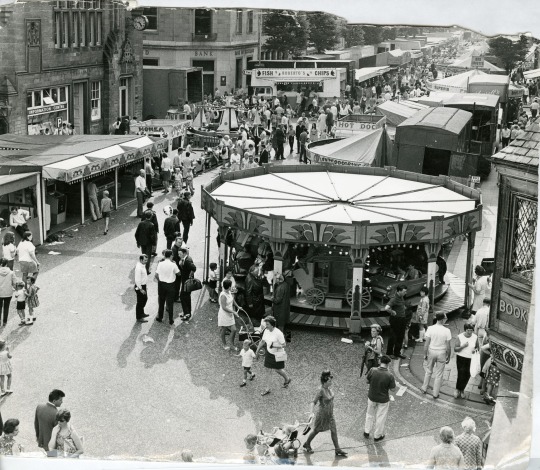
#DCArchives#StAndrews#LoveFife#Events#Fundraising#SocialHeritage#scotland#arbroath#st andrews#museum#fife#universityofstandrews
1 note
·
View note
Text
North Sea Scotland (8): A legacy in ruins
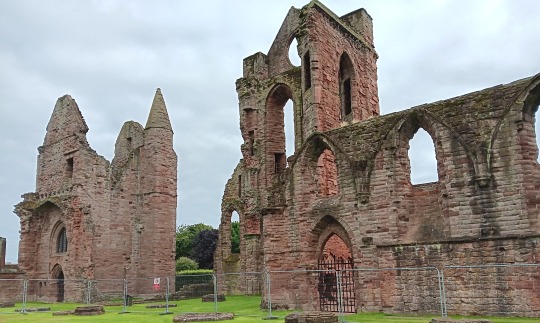
Arbroath Abbey, on Scotland's east coast, has a deserved place in the guidebooks. But its place in history books, I submit, is not nearly as prominent as it should be.
The Scots, of course, do honour the ruined abbey. It is best known for the 1320 Declaration of Arbroath, a letter drafted by a local monk (they had to find a guy who wrote decent Latin) and signed by nobles asking the Pope to recognise Scotland's right to independence.
The National Records of Scotland describe it as the "most famous historical record" they hold. The monastery, the Arbroath Abbey leaflet says, is "rightly famed for its place in Scotland's national consciousness".
But if that was all there was to it, the declaration would be precious only to Scots. You might reply that it voices a yearning for autonomy that others can identify with, but such a yearning is hardly original: Demosthenes and the Bible expressed it about two millennia earlier (in fact, some Scottish nationalists have invoked the Old Testament, implicitly equating English kings with Pharaoh.)
What matters most in the Declaration of Arbroath is not what it says about foreign rulers leaving people alone. It is what it says about the relationship between a people and its own rulers.
A few words of context: the death of a king in 1286 (in a stupid accident I've already written about) triggered a succession crisis that was fraught even by the standards of medieval Scotland. The desperate Scots asked Edward I of England to help them pick their new king.
Things unravelled from there: Ed seized the opportunity to claim overlordship over Scotland. Some Scots felt a type of loose allegiance was acceptable, but most said no. A rejectionist government struck an alliance with France, which precipitated an English invasion.
It was a brutal affair. In the 1290s William Wallace (a.k.a. Mel Gibson) started a guerrilla war against the occupiers, until he was betrayed and executed. Robert the Bruce picked up the fight, as well as the Scottish crown.
He was a great leader and his campaign achieved a lot in the early 14th century. But he had a problem: the Pope backed the English kings' claim. "God with us" was not an empty slogan then.
So the Declaration of Arbroath asks Pope John XXII to change tack – and, incodentally, to lift various excommunications the Bruce had on his head.

Now for the key passage: "If [Lord Robert] should agree to make us or our kingdom subject to the King of England or the English, we should exert ourselves at once to drive him out as our enemy... for, as long as but a hundred of us remain alive, never will we on any conditions be brought under English rule."
In other words the king's will is not absolute: his subjects are not bound to him unconditionally. The declaration presents the nation not just as distinct from its rulers, but potentially in conflict with them.
Thus, in the middle of a savage war of independence, a bunch of medieval bigwigs managed to spell out a universal principle. This is why the declaration was awarded special status by Unesco.
It should be regarded as a founding text of liberalism, along with the Magna Carta, the American Declaration of Independence and the French Declaration of the Rights of Man and of the Citizen.
You might object that such fancy words are cheap. The Arbroath plea for pontifical support was singularly ineffectual. It sat on John XXII's desk for nine years, by which time the Bruce had thrashed the English on the battlefield.
Moreover, the warlord's actions belie his noble principles. He was ruthless with rivals and his love of independence did not extend to Ireland, which he invaded. The Bruce was no different from the opportunistic barons who couched their beef in the self-righteous language of a Magna Carta that was immediately torn up by King John.
And for sheer hypocrisy, it is hard to beat America's slave-owning Founding Fathers and the blade-happy French Revolutionaries.
I concede all that. In fact, I would go so far as to say that Arbroath Abbey itself is a testament to betrayed ideals. It was founded in 1178 by William I of Scotland in memory of his childhood friend Thomas Becket, an English archbishop who died to keep the Church independent from the state.
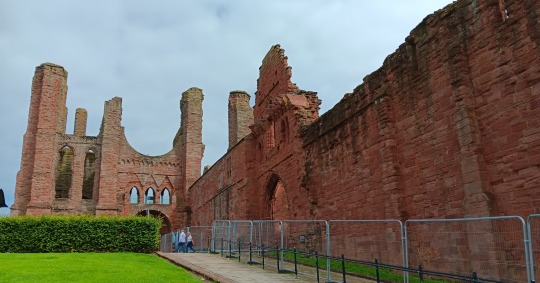
Having built a shrine to the separation of powers, William showered it with all the perks of royal favour. These included lucrative trading privileges and income from 24 parishes. The abbey grew wealthy indeed, becoming a magnet for well-connected leeches.
As the Arbroath leaflet says: "After 1500, the post of abbot became more a source of income than a position of spiritual leadership." No wonder the abbey was ransacked during the Reformation (hence its present state – I described how Scotland's Calvinist rampage started in this post).
None of that is meant to dismiss declarations of principles. Some words, in the long run, speak louder actions. There are times when it takes more courage to preach than to practice, and an eloquent sinner is more precious than a silent saint.
Judge the quality of the vision, not the virtue of the visionary. If they give you a stick you can use against any evildoer – including themselves – they contribute to human progress. The Arbroath declaration does that as clearly as any of the tablets of liberalism hallowed by history books.
0 notes
Text


Arbroath, Scotland
August 2024
10 notes
·
View notes
Video
IMG_0481 copy por adam caird
5 notes
·
View notes